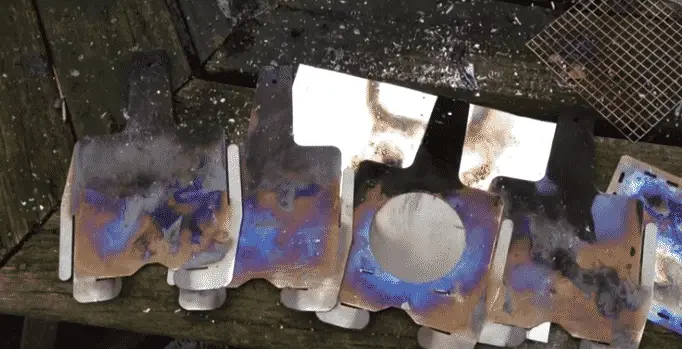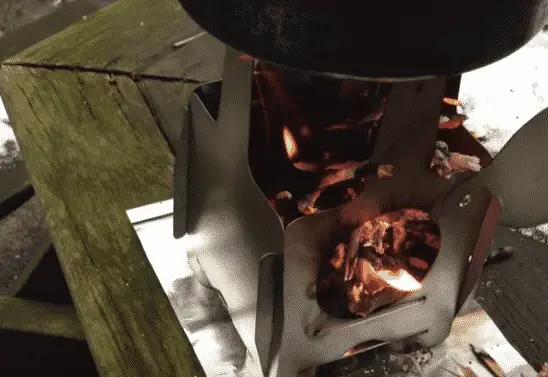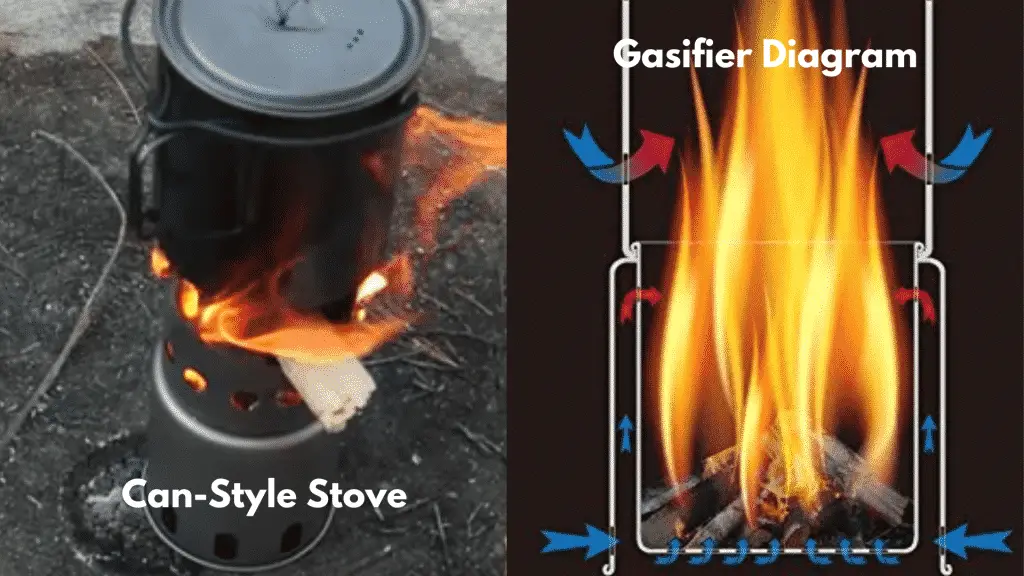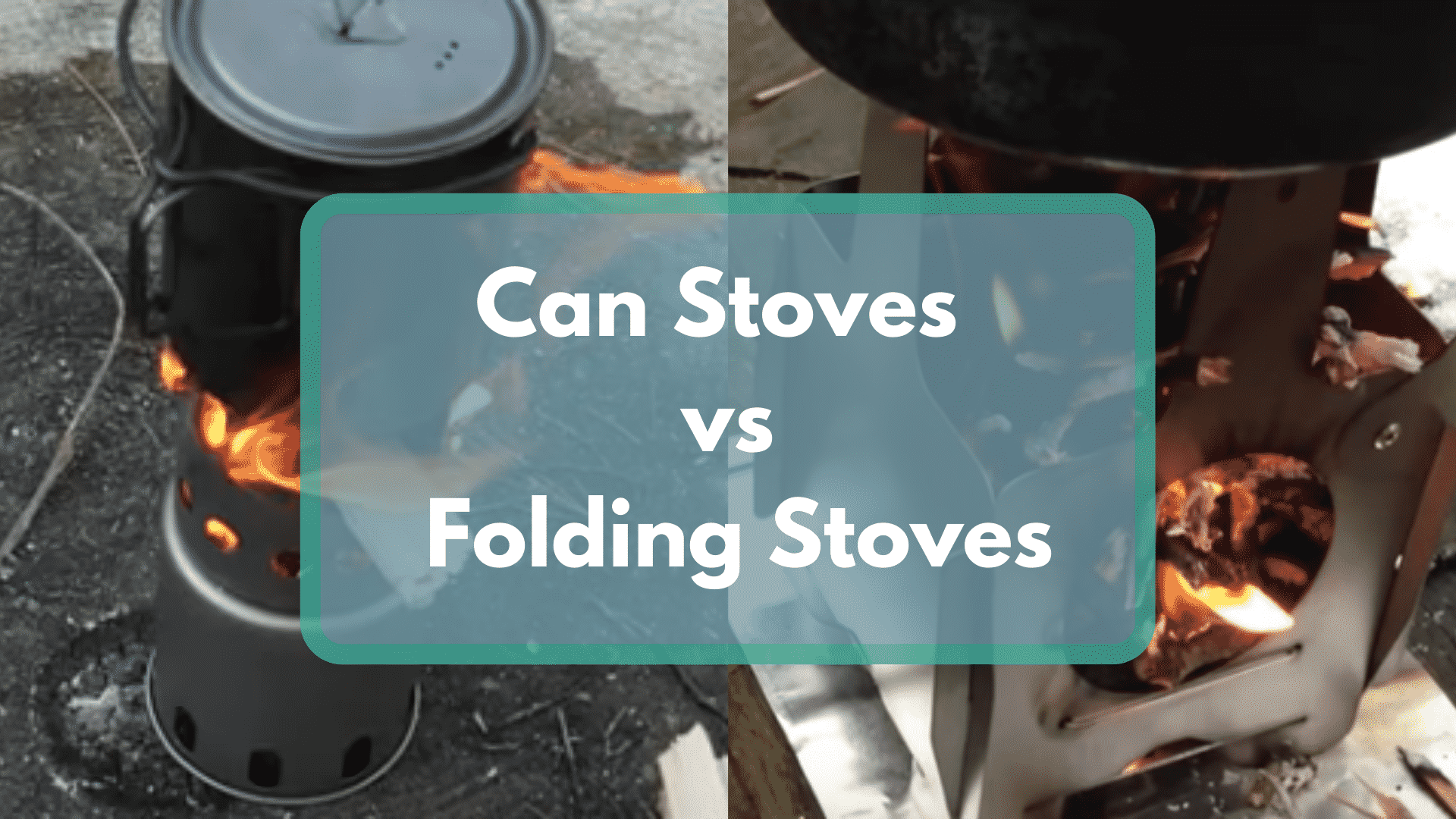For decades backpackers have overlooked one of the most efficient backpacking stoves on the market. When picking a stove nobody seems to consider wood burning camp stoves.
It really is a shame since wood-burning stoves are lightweight, affordable, efficient and easy to use. Although wood-burning stoves seem basic, hardly anybody knows how what to look for when buying one.
Table Of Contents
Why Should You Buy a Wood Backpacking Stove?
Most backpackers choose a wood stove so they can save weight. Wood backpacking stoves are seriously lightweight. Since you don’t have to carry along fuel(isobutane canisters or alcohol bottles) you can save a few pounds to your pack weight.
Wood burning stoves are the perfect size for solo backpackers. You can easily boil water and heat up basic camp food. As long as you can find wood to burn you’re good to go.
Plus everybody loves to have a fire burning. When spring/fall rolls around there’s nothing like having a live flame. They have less of an impact than traditional campfires and it’s much easier to control.
Watch Out For Fire Bans
Every state seems to have its own rules when it comes to fire bans. When there’s a fire ban, you’re not allowed to have an uncontrolled flame. Wood burning stoves are illegal in most areas.
Even though wood-burning stoves are relatively contained fire has a mind of its own. In these areas, you have to use a traditional fuel-based stove.
Consider This Before Buying a Wood Stove
Very few backpackers actually consider a wood-burning stove, but that doesn’t mean you shouldn’t consider one. Wood stoves typically fall into the survivalist category. Yes they will work, but they will require a little TLC to use.
- Requires Prep Work: With any wood burning stove you need to gather up wood, cut bark or carry firestarters. There’s no easy way to get a wood fire roaring.
- Sooty Mess: Burn some wood you’ll end up with a soot filled canister that needs cleaning. You have to clean your pots/pans every single time you use them.
- Smoke: It doesn’t matter how well you clean all your gear everything in your pack will smell like smoke.
- Time-Consuming: If you completely ignore the prep work and how long it takes to light a fire, boiling water will take at least 7-10 minutes for 2 cups.
- Unreliable in Bad Weather: It’s not going to be easy to find dry wood after a rainstorm. Unless you pack in dry timber or bring firestarters(these suckers are awesome) you won’t get a fire started.
Advantages of Wood Backpacking Stoves
- No Carrying Fuel: You don’t have to carry around those big 16/10oz bottles of fuel in your pack. In the rainy season you might need some firestarters and a lighter.
- Unlimited Fuel: There’s always going to be fuel around you in the forest. You can survive for a month without running out of fuel.
- Lightweight: Even the heaviest wood burning stove will be lighter than a traditional gas stove.
- Easy to Fly-In: When flying to remote locations you can’t bring along liquid/gas fuel. You can either bring a wood stove or desperately search for an outdoor store after landing.
- Don’t Need Camp Fire: After using the wood stove to cook it can double duty as a small camp fire. Since it’s a controlled fire it’s going to be safer and easier to maintain. Plus you’ll use less wood than with a traditional ground fire.
Designed For Remote Locations
I really wouldn’t recommend a wood-burning stove for a short weekend backpacking trip. They’re designed for fixed camping in remote locations. Unless you’re camping in the desert/mountains there’s going to be an abundance of wood to burn. You don’t have to rely on hauling in fuel to camp.
Different Types of Wood Burning Stoves
There are two basic styles of wood stoves on the market, Can-Stoves and Folding-Stoves. The main difference between these two stoves is how you feed them. Can style stoves look like a coffee can and they’re fed from the top, while folding stoves are compact and are fed from the bottom.
Folding-Style Stoves


My Favorite Folding Stoves
- Emberlit Titanium Fireant (budget pick stainless version)
- Vargo Titanium Hexagon
- Firebox Nano G2 Titanium (budget pick stainless version)
I really love how the majority of folding style stoves can be packed completely flat. This makes them so much easier to pack since they take up such a small amount of space.
Folding stoves are so much easier to store. You can take them apart and store them in a gallon-sized ziplock bag. All the soot gets trapped in the bag and your gear shouldn’t get nasty.
The only problem is you have to assemble and disassemble everything before use. It really isn’t all that difficult to assemble and take down your stove.
Since folding stoves typically have an access panel in the bottom they’re easy to add fuel. It’s nice to be able to add wood to the fire without having to take off your pot/pan.
Almost every folding stove I’ve used includes a burn pan on the bottom, which prevents scorching the ground. This makes burning in fire-ban areas so much safer.
Folding Stoves are Less Efficient
Folding stoves will always be less efficient than their gas brethren. It takes about 8-10 minutes to boil water whereas canister stoves only take 3-4 minutes(for 2 cups of water). Considering how much weight you drop from the pack a few extra minutes isn’t that big of a deal.
Can-Style Wood Stoves

There are simple can stoves like our grandfathers used and then there are gasifier can stoves. Simple can stoves are metal coffee cans with holes punched in the bottom. You just build the fire inside the can and Bob’s your uncle.
When talking about can-style stoves most people are referring to gasifier stoves(which don’t use gas). Gasifier stoves (like this Toaks Stove) use a two-stage burn cycle that generates heat by burning wood and using the gas byproduct to make them more efficient(sorry I’m not a scientist).
Gasifier stoves burn hotter than folding stoves while reducing the amount of wood you need. They are so much more efficient than an open flame stove. Gasifiers pump gas from the inner can up to the top of the outer can. Check out the picture above for a visual reference.
Can Stoves Have Problems
I love can stoves, but there are a few downsides. The biggest problem with can-style stoves is you can’t break them down. You need to find a large area in your pack and they can’t easily fit into bags.
It’s harder to deal with soot when you can’t collapse your stove. So you’re going to need to deal with a bunch of soot inside your bag.
Make a Coffee Can Stoves
You don’t need to spend a bunch of cash to buy a coffee can-style stove. All you really need is a coffee can with a bunch of holes punched into it. Only problem with these simple stoves is you might need to use a windscreen with them.



